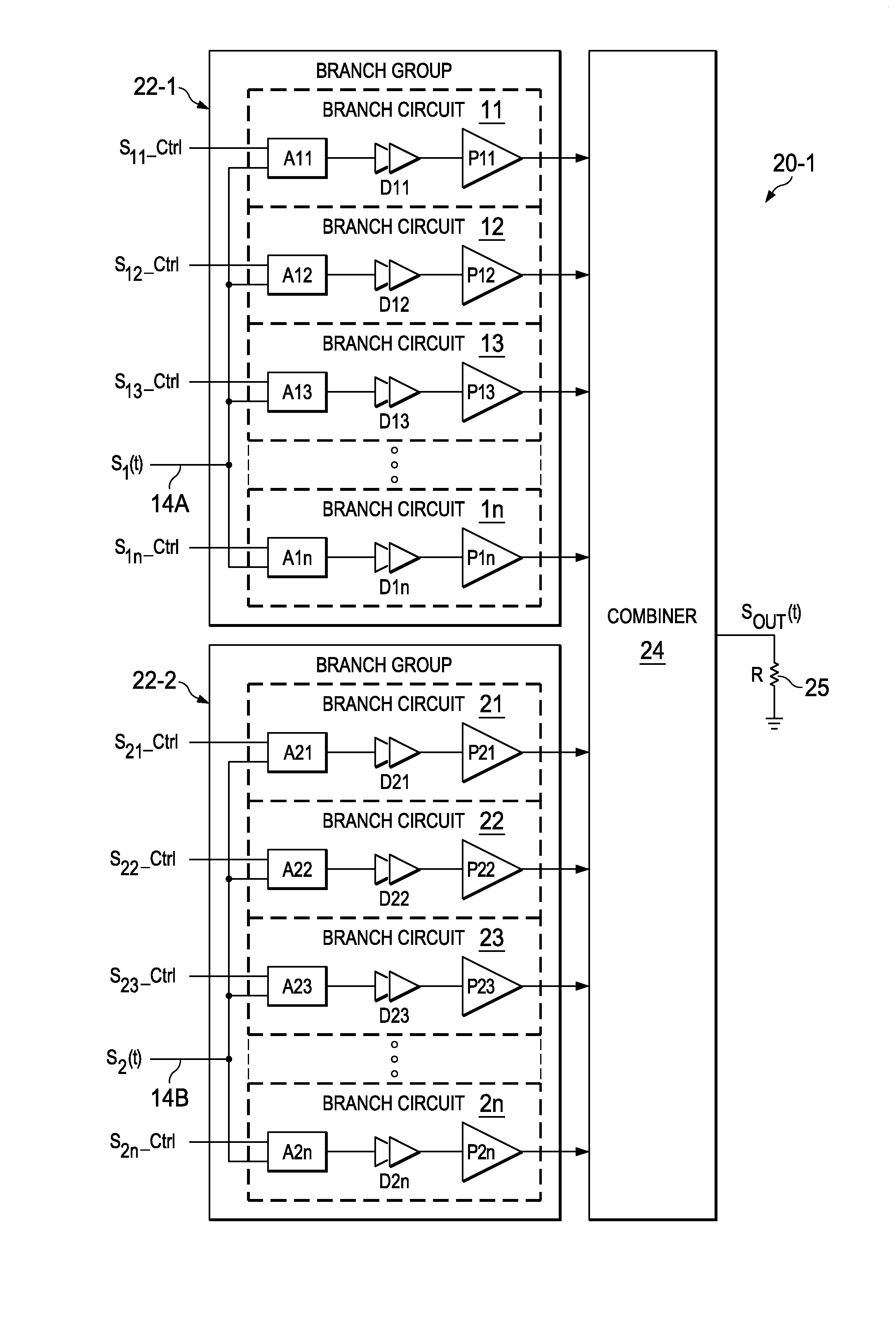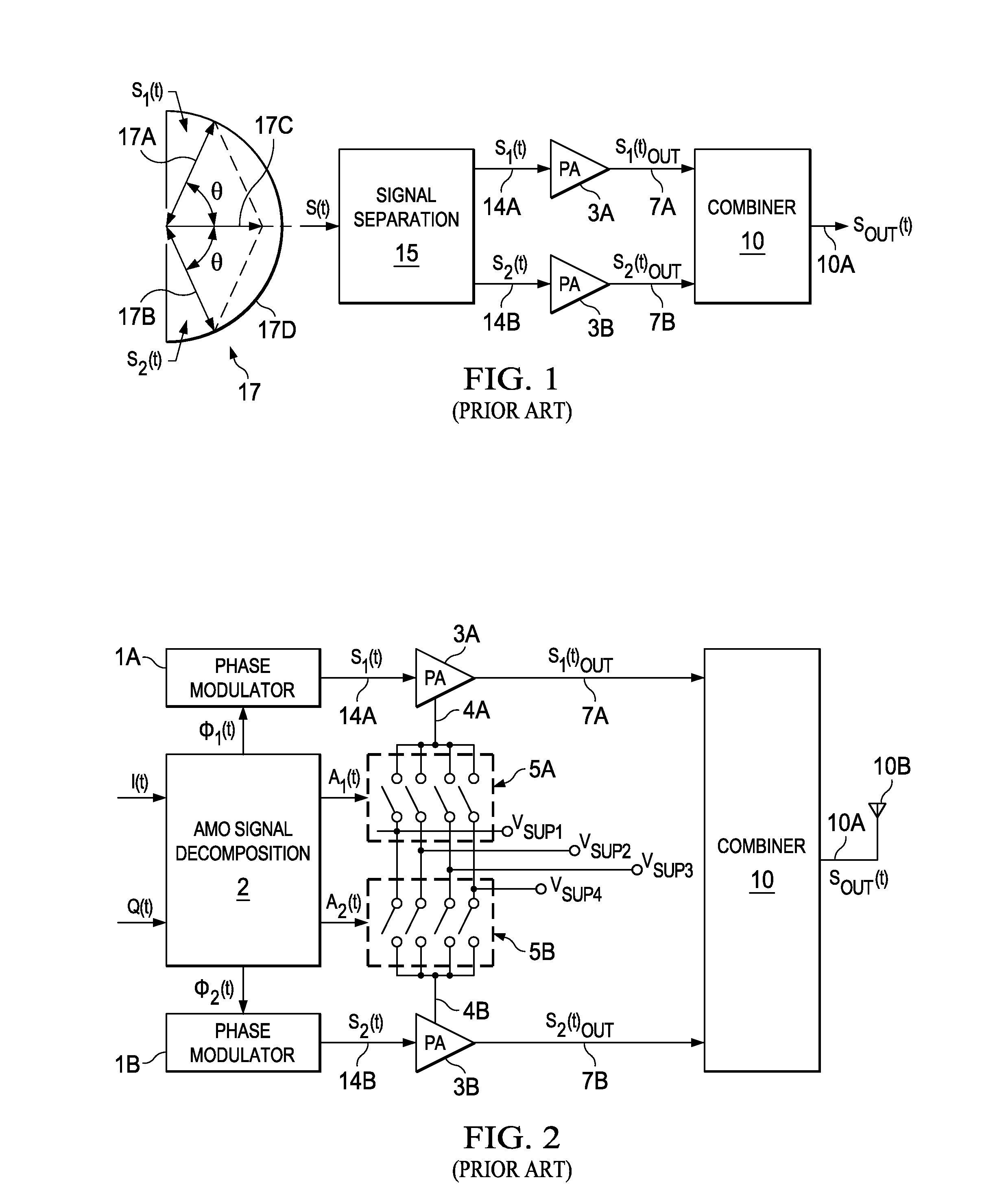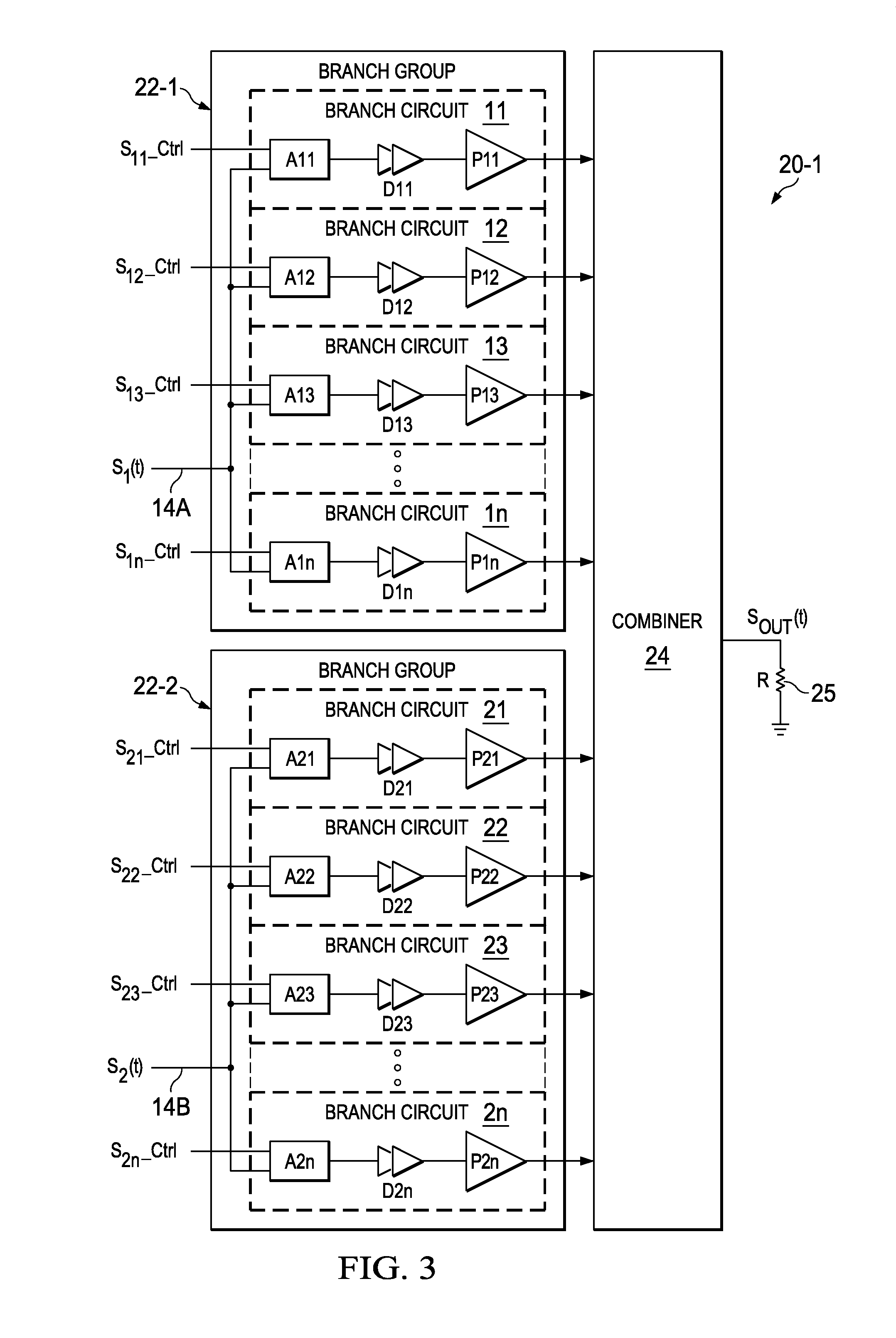Multi-branch outphasing system and method
- Summary
- Abstract
- Description
- Claims
- Application Information
AI Technical Summary
Benefits of technology
Problems solved by technology
Method used
Image
Examples
Embodiment Construction
[0052]An asymmetric multi-level, multi-branch outphasing power amplifier includes multiple circuits, each of which includes a power amplifier (such as a class-E power amplifier) and combiner circuitry coupled to the output of that power amplifier. A first RF drive signal is coupled to inputs of all the power amplifiers of a first group of branch circuits, and a second RF drive signal is coupled to inputs of all of the power amplifiers of a second group of branch circuits. In one embodiment, each branch circuit of the first group includes an enable circuit or activation circuit that couples or enables the first drive signal to the inputs of the various power amplifiers in the first group of branch circuits in response to a first group of corresponding selection control signals. Similarly, each branch circuit of the second group includes an enable circuit or activation circuit that couples the second drive signal to the inputs of the various power amplifiers in the second group of bra...
PUM
 Login to View More
Login to View More Abstract
Description
Claims
Application Information
 Login to View More
Login to View More - R&D
- Intellectual Property
- Life Sciences
- Materials
- Tech Scout
- Unparalleled Data Quality
- Higher Quality Content
- 60% Fewer Hallucinations
Browse by: Latest US Patents, China's latest patents, Technical Efficacy Thesaurus, Application Domain, Technology Topic, Popular Technical Reports.
© 2025 PatSnap. All rights reserved.Legal|Privacy policy|Modern Slavery Act Transparency Statement|Sitemap|About US| Contact US: help@patsnap.com



